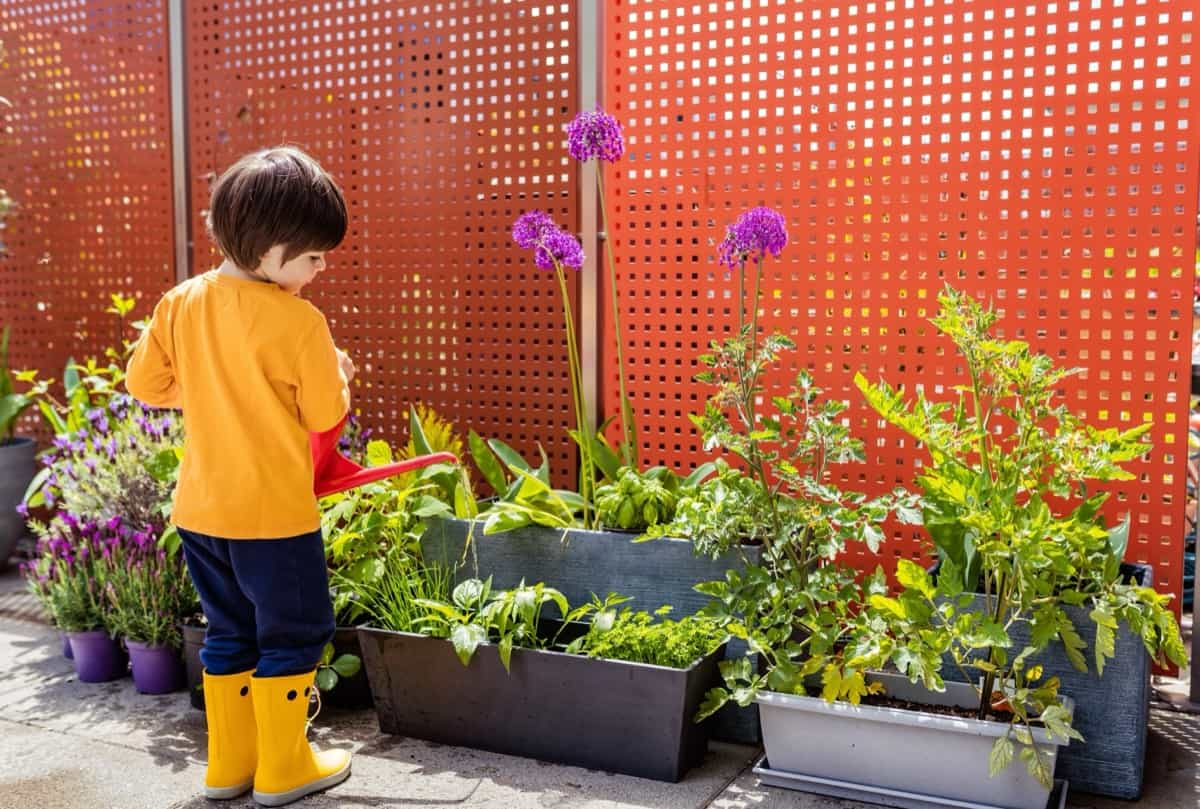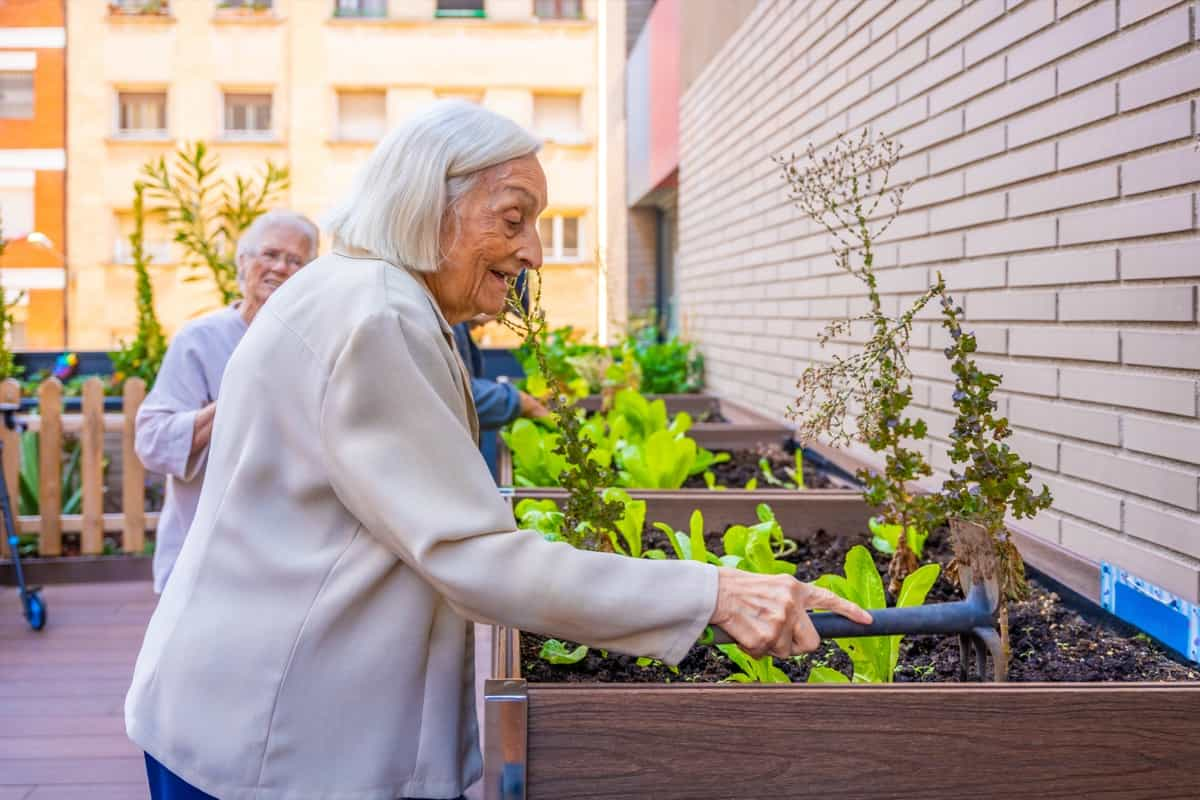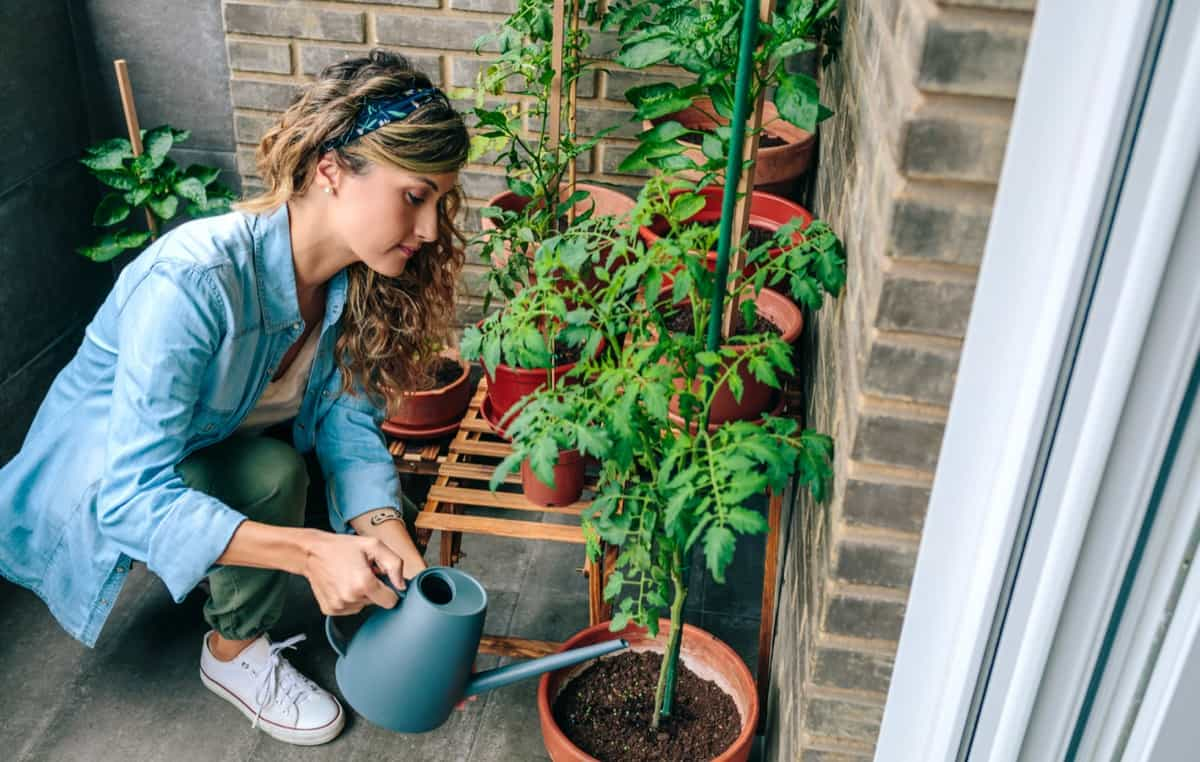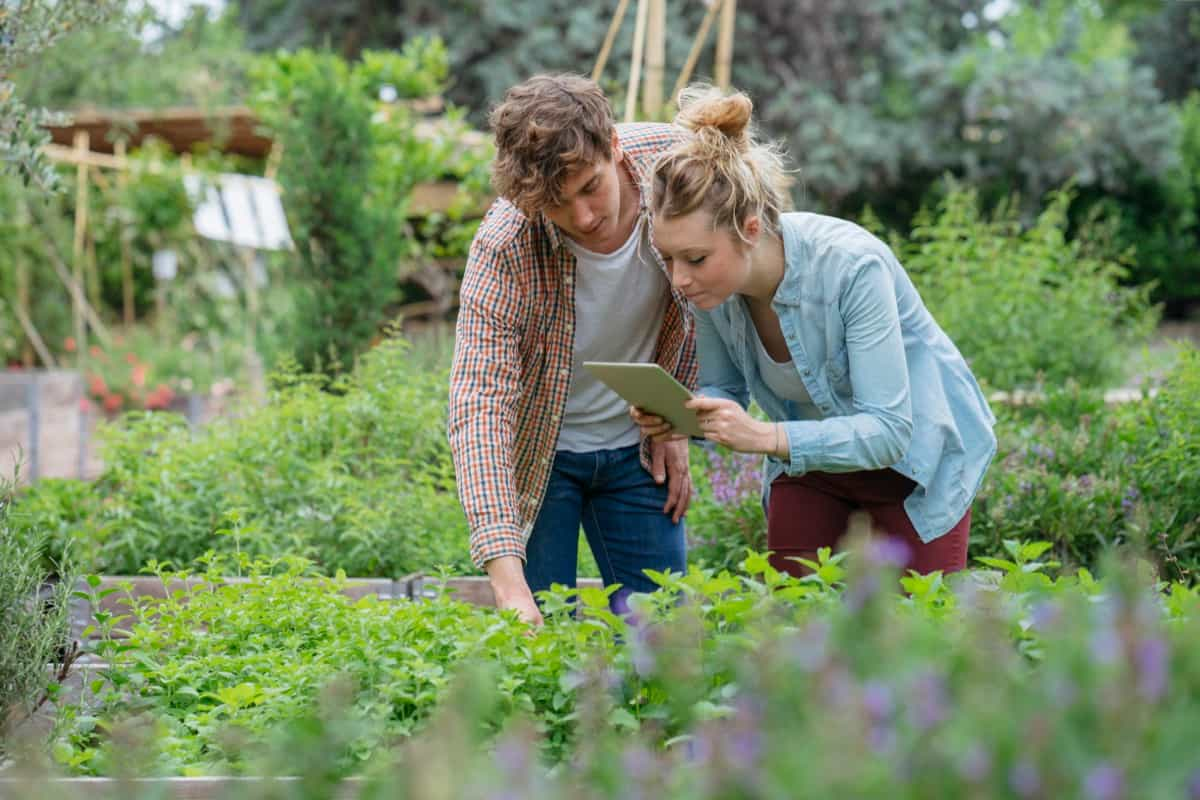Urban terrace gardening is the practice of growing plants on rooftops, balconies, or other unused spaces in urban areas. It is a growing trend in India, where many people are looking for ways to access fresh produce, improve their health, and contribute to environmental sustainability. In this blog post, we will explore some of the reasons why urban terrace gardening is becoming popular in India, the benefits it offers, and the role of technology in enhancing this practice.

Urban Terrace Gardening in India
The Rise of Urban Terrace Gardening in India: A Growing Trend
One of the main reasons why urban terrace gardening is gaining popularity in India is the increasing demand for fresh, organic fruits, vegetables. Due to rapid urbanization, pollution, and climate change, many people are concerned about the quality and safety of the food they consume. Urban terrace gardening allows them to grow their food in a controlled and natural environment without relying on external sources or using harmful chemicals.
Moreover, urban terrace gardening also provides a sense of satisfaction and joy to the growers, as they can enjoy the fruits and share them with their family and friends. Another reason why urban terrace gardening is becoming a common practice in India is the need for adequate green spaces in urban areas. Many cities in India are facing problems such as congestion, noise, heat, and air pollution, which affect the physical, mental well-being of the residents.
Urban terrace gardening can help create more green spaces in the city, which can improve the aesthetics, reduce the temperature, filter the air, and provide a relaxing and therapeutic environment for the people. Urban terrace gardening can also promote biodiversity and wildlife conservation, as it can attract birds, butterflies, bees, and other beneficial insects.
The Benefits of Urban Terrace Gardening: Healthy Living and Sustainability
Healthy living: Urban terrace gardening can improve the health and nutrition of the growers and consumers, as they can access fresh and organic food that is rich in vitamins, minerals, antioxidants, and fiber. Urban terrace gardening can also reduce stress, anxiety, depression, and loneliness, as it can provide a hobby, a social activity, and a connection with nature.
In case you missed it: Best Fertilizer for Terrace Plants: Covering Vegetables, Fruits, Flowers, and Herbs

Sustainability: Urban terrace gardening can reduce the environmental impact of food production and consumption, as it can save water, energy, land, and transportation costs. Urban terrace gardening can also minimize waste generation and greenhouse gas emissions, as it can prevent food loss and spoilage and use organic waste as compost or fertilizer.
Education: Urban terrace gardening can provide an opportunity for learning and awareness about various topics such as plants, soil, water, climate, ecology, nutrition, and health. Urban terrace gardening can also foster a sense of responsibility and stewardship among the growers and consumers.
Urban terrace gardening has numerous other benefits, including improving air quality, reducing heat island effects, enhancing biodiversity, and promoting mental and physical health. Plants absorb carbon dioxide, release oxygen, reducing greenhouse gas emissions, creating a healthier environment for urban dwellers. They also filter dust, pollutants, and noise, reducing the heat island effect.
Urban terrace gardens provide shade, cooling, and evapotranspiration, lowering the temperature and humidity of the surrounding air. They also create habitats for various birds, insects, and other animals, enhancing the diversity and richness of life in cities. Urban terrace gardening also promotes mental and physical health by providing relaxation, recreation, and therapy for urban residents.
It can reduce stress, anxiety, depression, mood, and self-esteem and promote social interaction. It also encourages physical activity, improves nutrition, and prevents obesity and chronic diseases by providing fresh, organic, and locally grown fruits, vegetables, herbs, and flowers. Additionally, urban terrace gardening saves money and resources by reducing household expenses, waste, water consumption, energy use, and transportation costs by minimizing irrigation, refrigeration, and packaging needs.
Urban Terrace Gardening as a Solution to India’s Food Security Challenges
India faces numerous challenges in ensuring food security for its growing population, including land degradation, water scarcity, climate change, and poverty and hunger. Land degradation, caused by factors like soil erosion, salinization, desertification, and loss of fertility, reduces crop yields and increases vulnerability to droughts and floods. Water scarcity is exacerbated by population growth, climate change urbanization, pollution, and overexploitation, affecting crop production and food availability.
In case you missed it: How to Grow Lawn Grass on Terrace: A Beginners Guide to Planting and Care

Climate change also threat to food security by altering temperature, rainfall, seasons, pests, diseases, and natural disasters, affecting crop growth, harvesting, storage, distribution, and consumption. Poverty and hunger are major issues in India, with millions living below the poverty line and suffering from malnutrition, stunting, wasting, and micronutrient deficiencies. Urban terrace gardening can offer a potential solution by providing an alternative or supplementary source of food for urban households.
Urban terrace gardens can increase food production, improve food quality, empower food sovereignty, and reduce dependence on external factors like markets, suppliers, and policies. By utilizing urban terrace gardening, India can address these challenges and improve food security for its growing population.
The Role of Technology in Urban Terrace Gardening: Automation and Smart Systems
Technology is revolutionizing urban terrace gardening by enhancing efficiency and productivity. Automation and smart systems can monitor and control plant parameters like soil moisture, temperature, light, pH, and nutrients, aiding in watering, fertilizing, pruning, harvesting, and pest management.
These systems reduce manual labor and human errors, enabling remote access and control through mobile devices or computers. Examples of automation and smart systems include smart pots with sensors and actuators that adjust water levels, nutrient levels, and drainage according to plant needs.
Smart irrigation systems deliver water according to plant requirements and weather conditions, saving water and energy. Smart lighting systems provide artificial light according to plant needs and natural light availability, saving power. Smart greenhouses create controlled environments for plants by regulating temperature, humidity, ventilation, and CO2 levels, protecting them from harsh weather conditions, pests, and diseases.
The Impact of Urban Terrace Gardening on Urban Planning and Design
Urban terrace gardening enhances urban planning and design by improving aesthetics, functionality, and sustainability. It adds greenery to rooftops, balconies, and terraces, increasing biodiversity and ecological value. It reduces the urban heat island effect by lowering temperatures and increasing humidity.
It improves air quality and noise pollution by filtering out dust particles, pollutants, and noise through photosynthesis and sound absorption. It also helps mitigate stormwater runoff and flooding by retaining and infiltrating rainwater through permeable surfaces and vegetation. Urban terrace gardening contributes to food security and nutrition by producing fresh, organic, and local produce.
The Growing Popularity of Terrace Gardening in Indian Cities
Terrace gardening, a traditional practice in India, has gained popularity among urban dwellers, particularly in metropolitan cities like Delhi, Mumbai, Bangalore, Chennai, Hyderabad, and Kolkata. The growing popularity can be attributed to rapid urbanization, population growth, rising food prices, increased awareness about food quality and safety, eco-friendly lifestyles, and the growing stress and anxiety levels among urban residents. Rapid urbanization and population growth have led to a loss of green spaces and agricultural land, which terrace gardening can help create.
In case you missed it: Gardening Tips for Beginners: At Home, in Pots/Containers, Indoors, On Terrace for Vegetables, Flowers, Fruits, and Herbs

Rising food prices and adulteration have also led to a greater focus on growing organic food, saving on grocery bills. Additionally, increasing environmental concerns, such as climate change, air pollution, water scarcity, and waste management, have motivated people to adopt more eco-friendly lifestyles. Terrace gardening can also help people cope with stress, improve mood, enhance creativity, and boost their physical health.
The Benefits of Terrace Gardening for Mental Health and Well-being
Urban terrace gardening is the practice of growing plants on rooftops, balconies, or other unused spaces in urban areas. Terrace gardening can offer a therapeutic and relaxing activity for urban dwellers, who often face stress, anxiety, and depression due to the fast-paced and crowded lifestyle. Terrace gardening can also improve the quality of life by providing fresh and organic food, enhancing the aesthetic appeal of the urban landscape, and creating a sense of connection with nature.
Urban Terrace Gardening: A Sustainable Alternative to Traditional Farming
Terrace gardening can contribute to the sustainability of urban food systems by reducing the dependence on external sources of food, water, and energy. Terrace gardening can also reduce the environmental impact of agriculture by minimizing the use of chemical fertilizers and pesticides, lowering greenhouse gas emissions, and increasing biodiversity and ecological balance. Terrace gardening can provide satisfaction, accomplishment, and creativity as you cultivate your plants and harvest your produce.
Terrace gardening can also reduce stress, anxiety, and depression as you connect with nature and enjoy the fresh air and sunlight. Terrace gardening can also improve your physical health as you engage in physical activity and consume more fruits and vegetables. Terrace gardening can also enhance your social well-being as you interact with other gardeners, share your produce, and learn from each other.
The Role of Community Gardens in Promoting Urban Terrace Gardening
Community gardens are spaces where people can grow plants collectively, either in individual plots or in shared areas. Community gardens can help in promoting urban terrace gardening, as they can provide access to land, water, seeds, tools, compost, and other resources that may be scarce or expensive for individual terrace gardeners.
In case you missed it: 15 Key Rules for Successful Terrace Farming/Gardening: Check How this Detailed Guide Helps Beginners

Community gardens can also offer education, training, and support for novice or experienced terrace gardeners, as well as opportunities for networking, collaboration, and advocacy. Community gardens can also foster a sense of community, belonging, and civic engagement among terrace gardeners and other residents.
The Importance of Water Conservation in Urban Terrace Gardening
Water is a precious, limited resource, especially in urban areas where water demand is high and water supply is often unreliable or contaminated. Water conservation is therefore essential for urban terrace gardening, as it can reduce water consumption, save money, prevent water pollution, and protect the environment.
- Collect rainwater or greywater (from sinks, showers, or washing machines) and store it in barrels or tanks for irrigation.
- Choosing drought-tolerant or native plants that require less water or can adapt to different climatic conditions.
- Mulching soil with organic materials (such as straw, or wood chipsleaves) to retain moisture and prevent evaporation.
- Watering the plants early in the morning/ late in the evening to avoid water loss.
- Watering the plants deeply but infrequently to encourage deep root growth and reduce runoff.
- Using drip irrigation/ soaker hoses to deliver water directly to the roots and minimize wastage.
The Use of Vertical Gardening Techniques in Urban Terrace Gardening
Vertical gardening is growing plants vertically, using structures like trellises, poles, walls, fences, or containers. It is particularly beneficial for urban terrace gardening, as it maximizes space usage and increases crop yield. It creates a visually appealing environment, provides shade, privacy, and noise reduction, improves air quality by absorbing carbon dioxide and releasing oxygen, and attracts beneficial insects and birds for pollination and pest control.
Examples of vertically grown plants include climbing or vining plants like beans, peas, tomatoes, cucumbers, squash, melons, grapes, or kiwis, hanging or trailing plants like strawberries, herbs, flowers, or succulents, and edible or ornamental plants like lettuce, spinach, kale, chard, cabbage, broccoli, carrots, radishes, beets, onions, garlic, leeks, parsley, basil, mint, rosemary, thyme, oregano.
The Challenges and Opportunities of Urban Terrace Gardening in India
Urban terrace gardening in India faces many challenges, such as lack of knowledge, awareness, and skills; lack of institutional support and policies; lack of access to land, water, and inputs; lack of market linkages and value addition; and socio-cultural barriers. However, urban terrace gardening in India also offers many opportunities, such as increasing food security and nutrition, empowering women and marginalized groups, creating employment and income generation, improving health and well-being, and promoting environmental awareness and education.
In case you missed it: Best Season to Grow Onions at Home in India: in Pots, Terrace, Apartment Balcony, and Backyards

The Future of Urban Terrace Gardening in India
Urban terrace gardening in India has great potential to grow and expand in the future. With the increasing population, urbanization, and climate change challenges, urban terrace gardening can provide a viable solution for enhancing the resilience and sustainability of urban food systems. Urban terrace gardening can also create a positive social change by transforming urban spaces into productive, healthy, and beautiful places.
Conclusion
Urban terrace gardening in India symbolizes a significant shift towards sustainable living and health-conscious choices. It represents a green revolution in urban landscapes, combining environmental benefits with personal well-being. This trend is a promising step towards a more eco-friendly and self-reliant future in Indian cities.
- Types of Pesticides Used in Agriculture: A Beginner’s Guide
- Economical Aquaculture: A Guide to Low-Budget Fish Farming
- 15 Common Planting Errors That Can Doom Your Fruit Trees
- How to Make Houseplants Bushy: Effective Tips and Ideas
- Innovative Strategies for Boosting Coconut Pollination and Yield
- Pollination Strategies for Maximum Pumpkin Yield
- The Complete Guide to Chicken Fattening: Strategies for Maximum Growth
- Natural Solutions for Tulip Problems: 100% Effective Remedies for Leaf and Bulb-Related Issues
- Revolutionizing Citrus Preservation: Towards a Healthier, Greener Future
- Natural Solutions for Peony Leaf and Flower Problems: 100% Effective Remedies
- Maximizing Profits with Avocado Contract Farming in India: A Comprehensive Guide
- Natural Solutions for Hydrangea Problems: 100% Effective Remedies for Leaf and Flowers
- The Ultimate Guide to Choosing the Perfect Foliage Friend: Bringing Life Indoors
- From Sunlight to Sustainability: 15 Ways to Use Solar Technology in Agriculture
- The Ultimate Guide to Dong Tao Chicken: Exploring from History to Raising
- The Eco-Friendly Makeover: How to Convert Your Unused Swimming Pool into a Fish Pond
- Mastering the Art of Delaware Chicken Farming: Essentials for Healthy Backyard Flocks
- 20 Best Homemade Fertilizers for Money Plant: DIY Recipes and Application Methods
- How to Craft a Comprehensive Free-Range Chicken Farming Business Plan
- Brighten Your Flock: Raising Easter Egger Chickens for Beauty and Bounty
- How to Optimize Your Poultry Egg Farm Business Plan with These Strategies
- Subsidy for Spirulina Cultivation: How Indian Government Schemes Encouraging Spirulina Farmers
- Ultimate Guide to Raising Dominique Chickens: Breeding, Feeding, Egg-Production, and Care
- Mastering the Art of Raising Jersey Giant Chickens: Care, Feeding, and More
- Ultimate Guide to Raising Legbar Chickens: Breeding, Farming Practices, Diet, Egg-Production
- How to Raise Welsummer Chickens: A Comprehensive Guide for Beginners
- How to Protect Indoor Plants in Winter: A Comprehensive Guide
- Ultimate Guide to Grow Bag Gardening: Tips, Tricks, and Planting Ideas for Urban Gardeners
- Guide to Lotus Cultivation: How to Propagate, Plant, Grow, Care, Cost, and Profit
- Agriculture Drone Subsidy Scheme: Government Kisan Subsidy, License, and How to Apply Online
- Ultimate Guide to Raising Araucana Chickens: Breed Profile, Farming Economics, Diet, and Care
- Bringing Hydroponics to Classroom: Importance, Benefits of Learning for School Students
- Ultimate Guide to Raising Polish Chickens: Breed Profile, Farming Economics, Diet, and Care
- Ultimate Guide to Raising Australorp Chickens: Profile, Farming Economics, Egg Production, Diet, and Care
- Silkie Chicken Farming: Raising Practices, Varieties, Egg Production, Diet, and Care
- Sussex Chicken Farming: Raising Practices, Varieties, Egg Production, Diet and Care